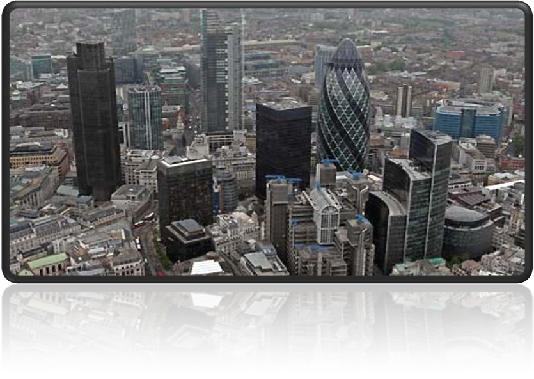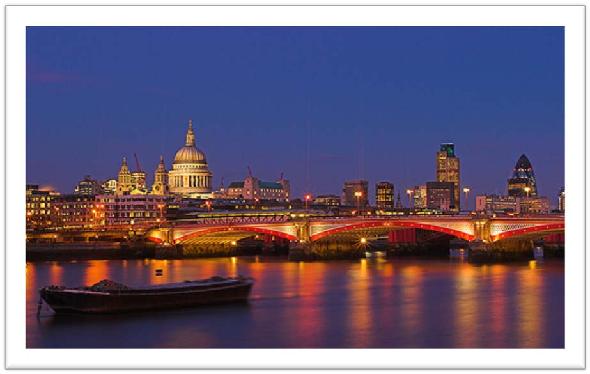
City of London
The City of London is an area of London. In the medieval period it constituted most of London, but the conurbation has grown far beyond it. As the City's boundaries have remained almost unchanged since the Middle Ages, it is now only a tiny part of themetropolis, though it remains a notable part of central London, holds city
status in its own right, and is a separate ceremonial county.
Historically the City of London is ancient, founded in

Hitory of London City
Nearly three hundred years later during the Second World War, more of London was again destroyed in the Blitz, but the number of buildings that survived both catastrophes is impressive.
The worst of all, and the most famous - the Great Fire of London in 1666 destroyed many historic buildings, but in fact enabled a new better planned London to be rebuilt with superior buildings and wider streets.
London Bridge refers to several bridges that have spanned the River Thames between the City of London and Southwark, in central London. The current crossing, which opened to traffic in 1973,

is a box girder bridge constructed from concrete and steel.
The modern bridge is owned and maintained by Bridge House Estates, an independent charity overseen by the City of London Corporation. The A3, which it carries, is maintained by the Greater London Authority. The crossing also delineates an area along the southern bank of the River Thames, between London Bridge and Tower Bridge, that has been designated as a business improvement district.
The bridge was some 26 feet (8 m) wide, and about
gatehouses at both ends. By 1358, it was already crowded, with 138 shops.
The southern gatehouse became the scene of one of London's most notorious sights: a display of the severed heads of traitors, impaled on pikes and dipped in tar to preserve them against the elements. The head of William Wallace was the first to appear on the gate, in 1305, starting a tradition that was to continue for another 355 years. Other famous heads on pikes included those of Jack Cade in 1450, Thomas More in 1535, Bishop John Fisher in the same year, and Thomas Cromwell in 1540. In 1598 a German visitor to London Paul Hentzner counted over 30 heads on the bridge.
Contact Details
Address:
City of London
P O Box 5035
London, Ontario Canada
N6A 4L9.
Telephone: +44 (0)519
Email: webmaster@london.ca
Office hours are:
8:30 a.m. - 4:30 p.m. Monday to Friday